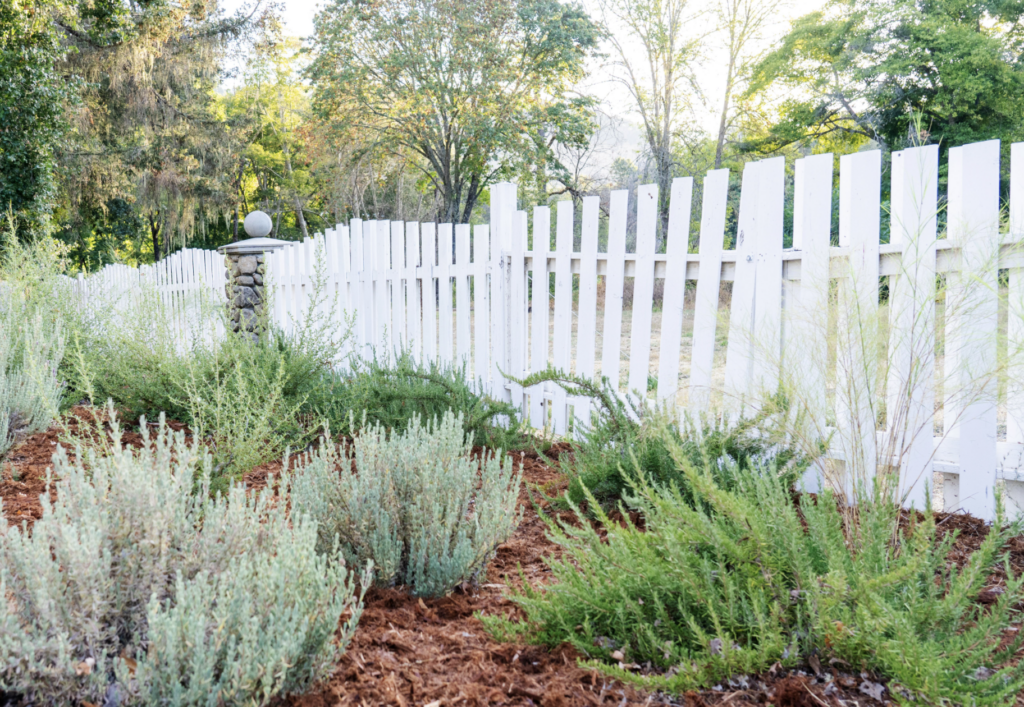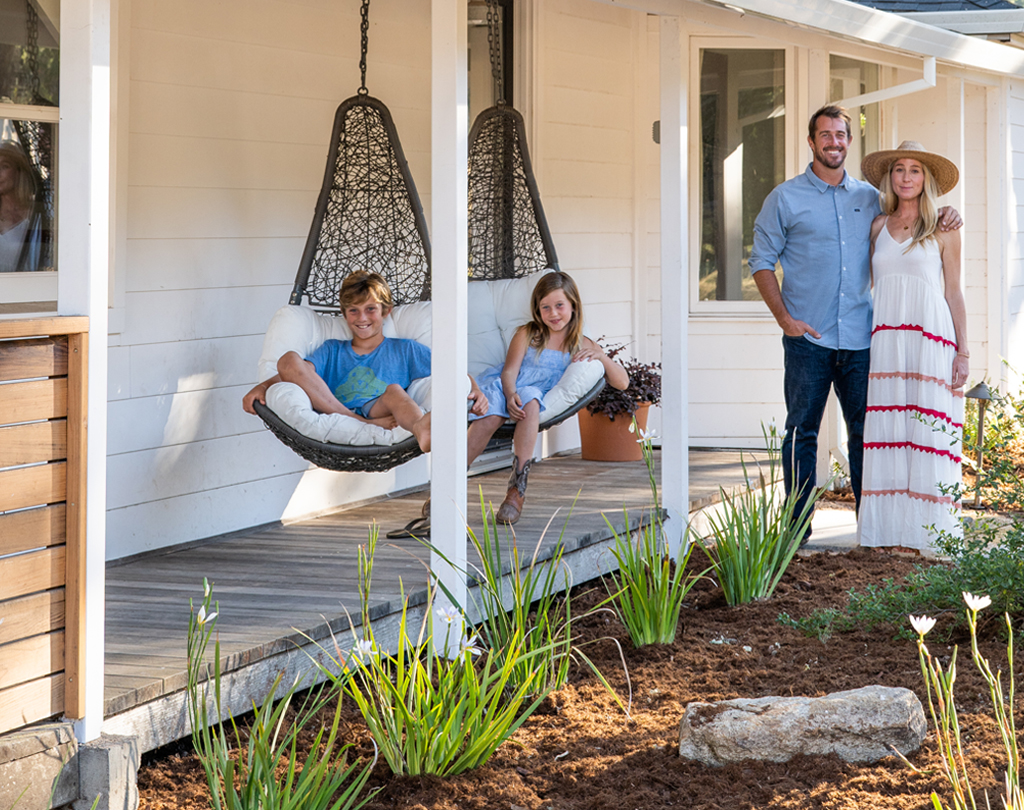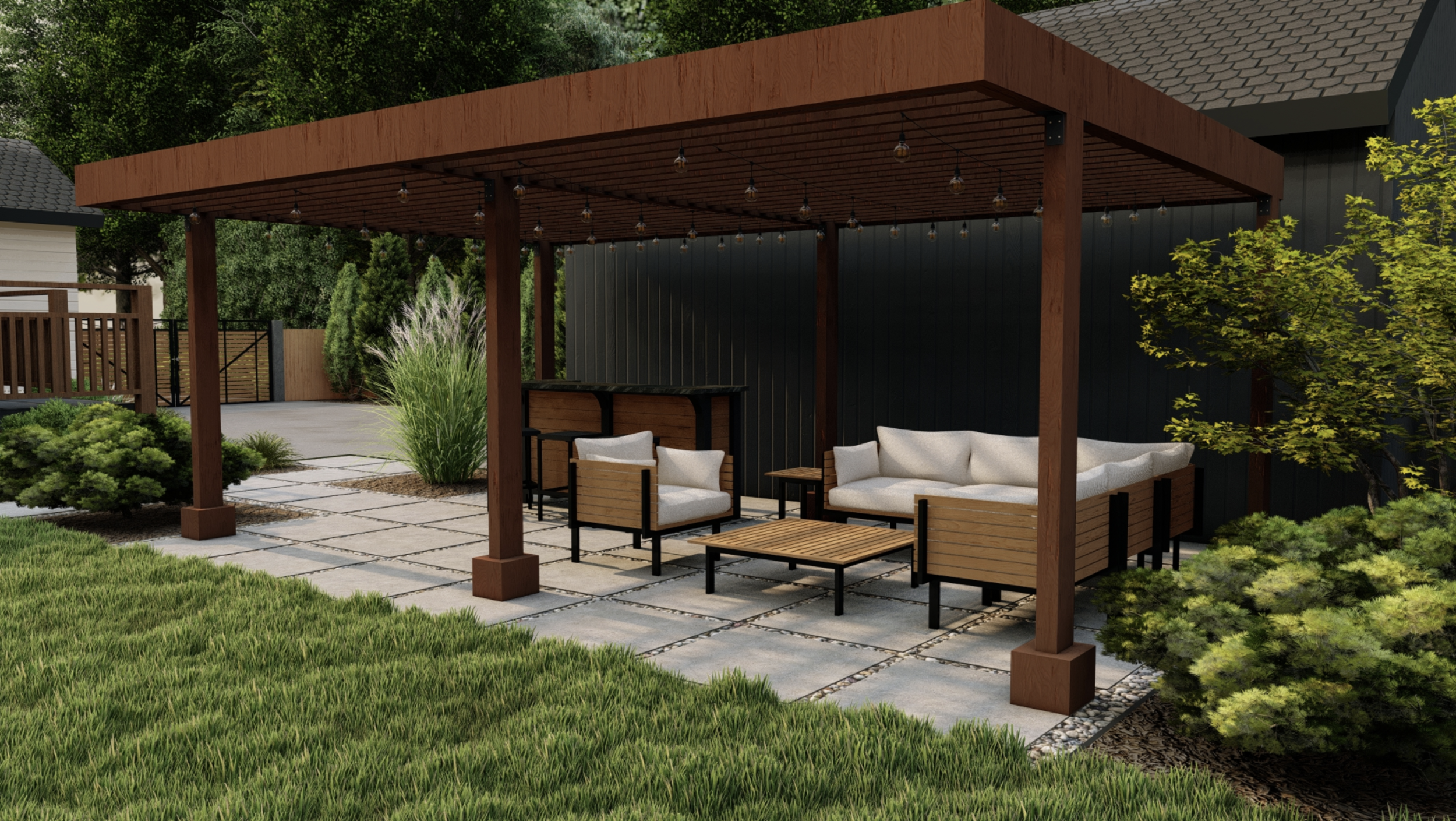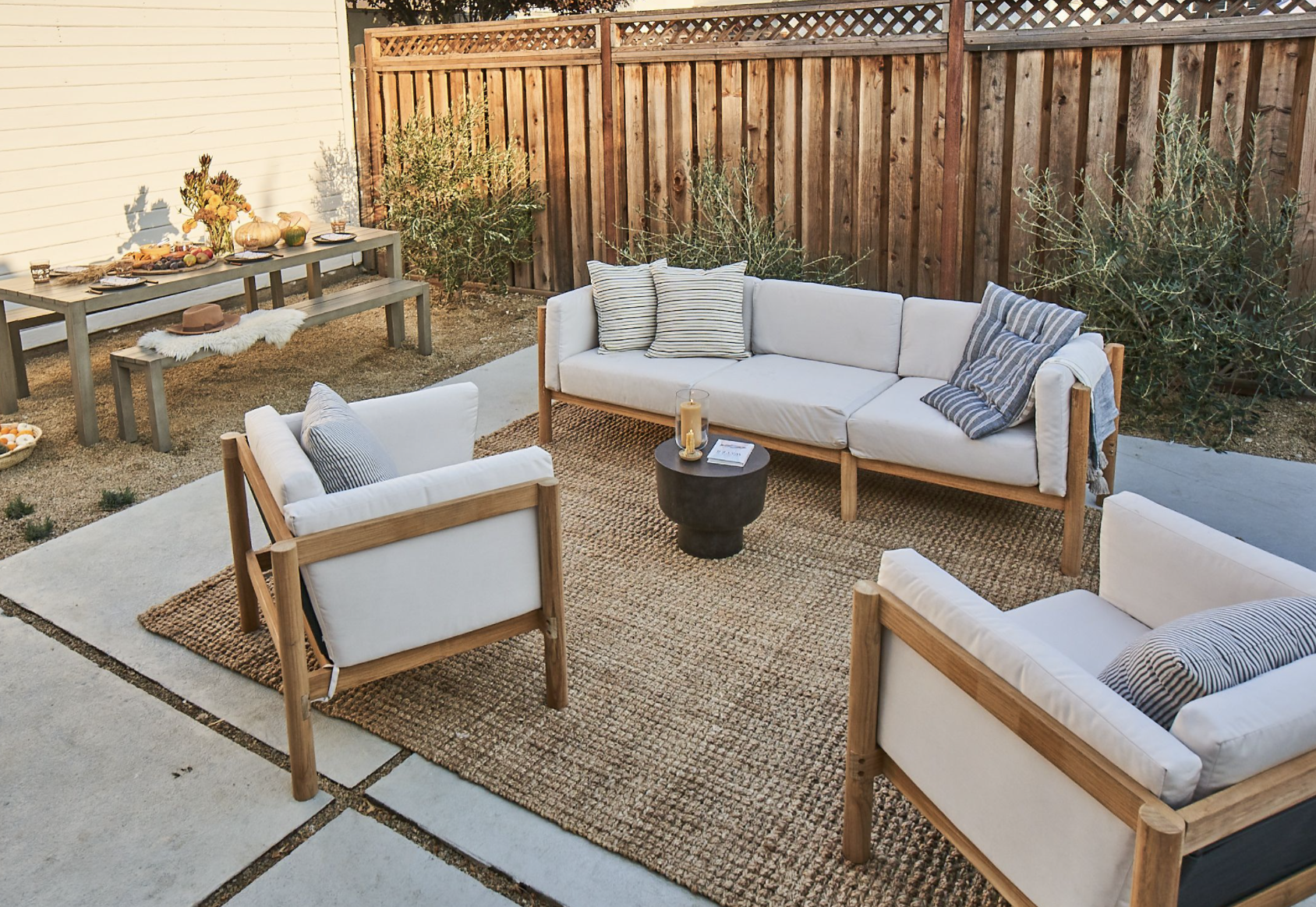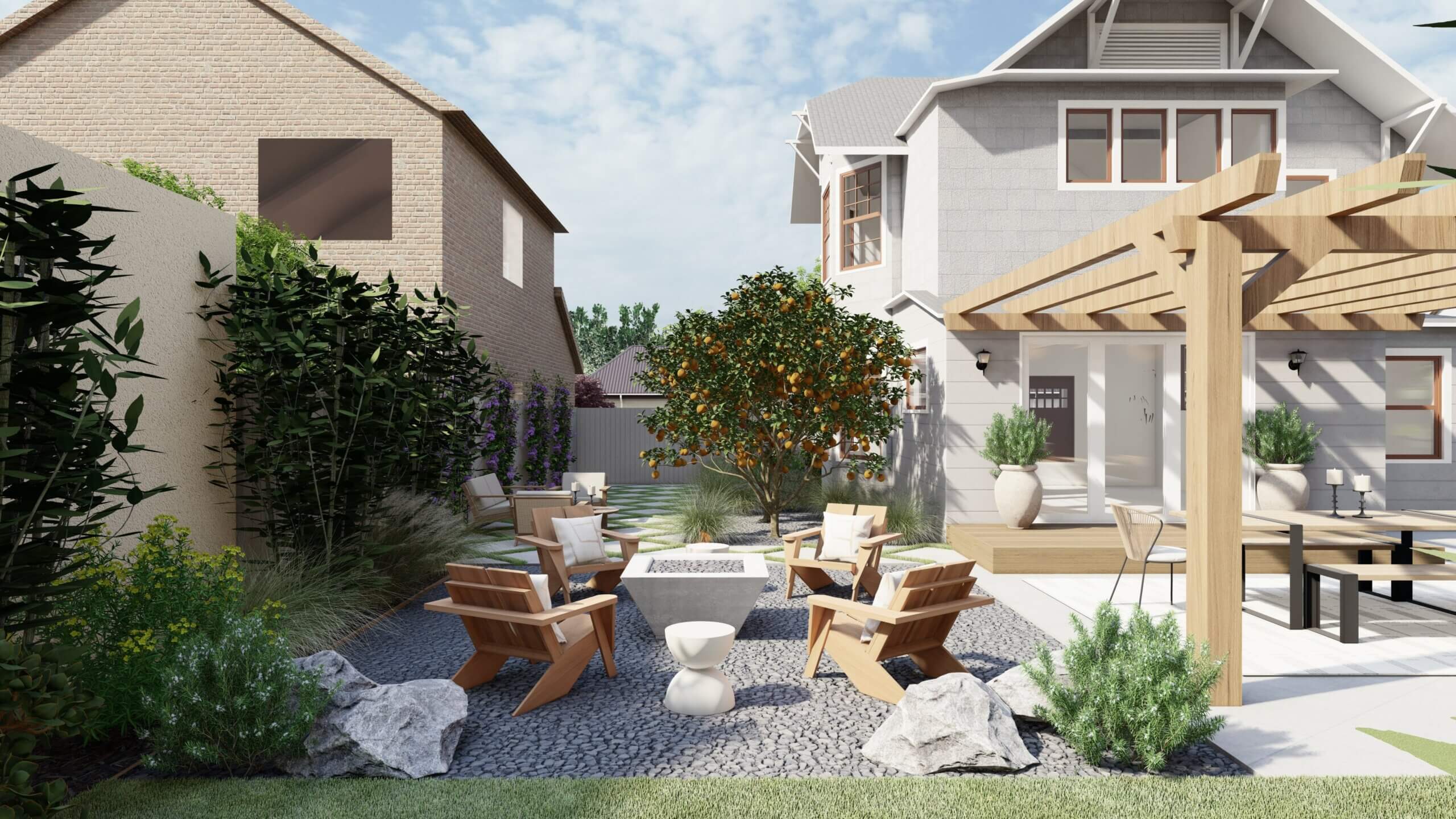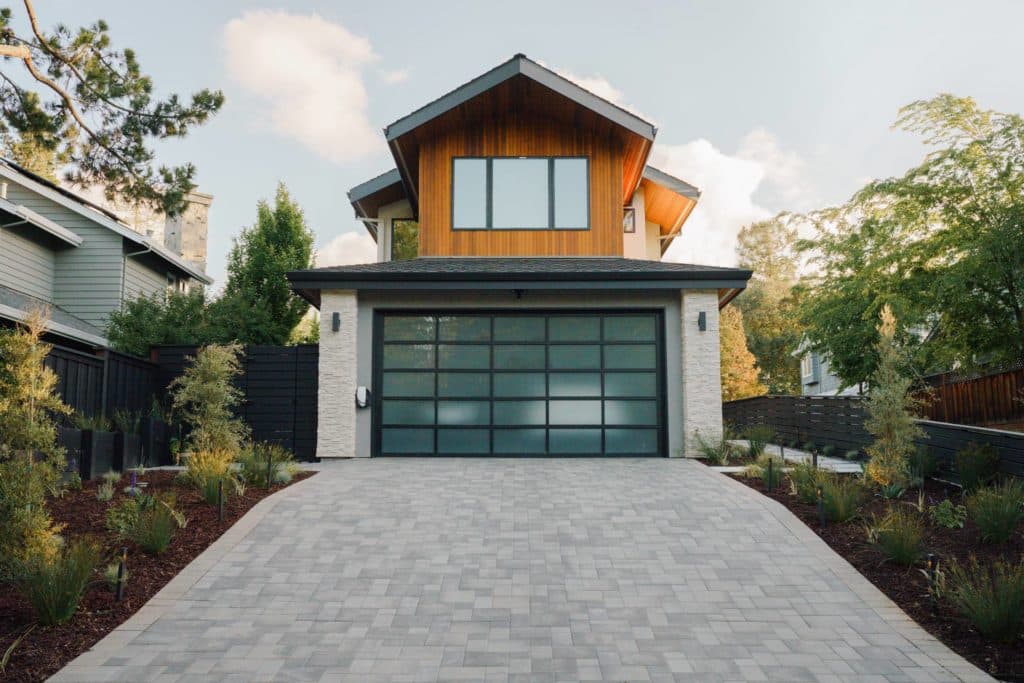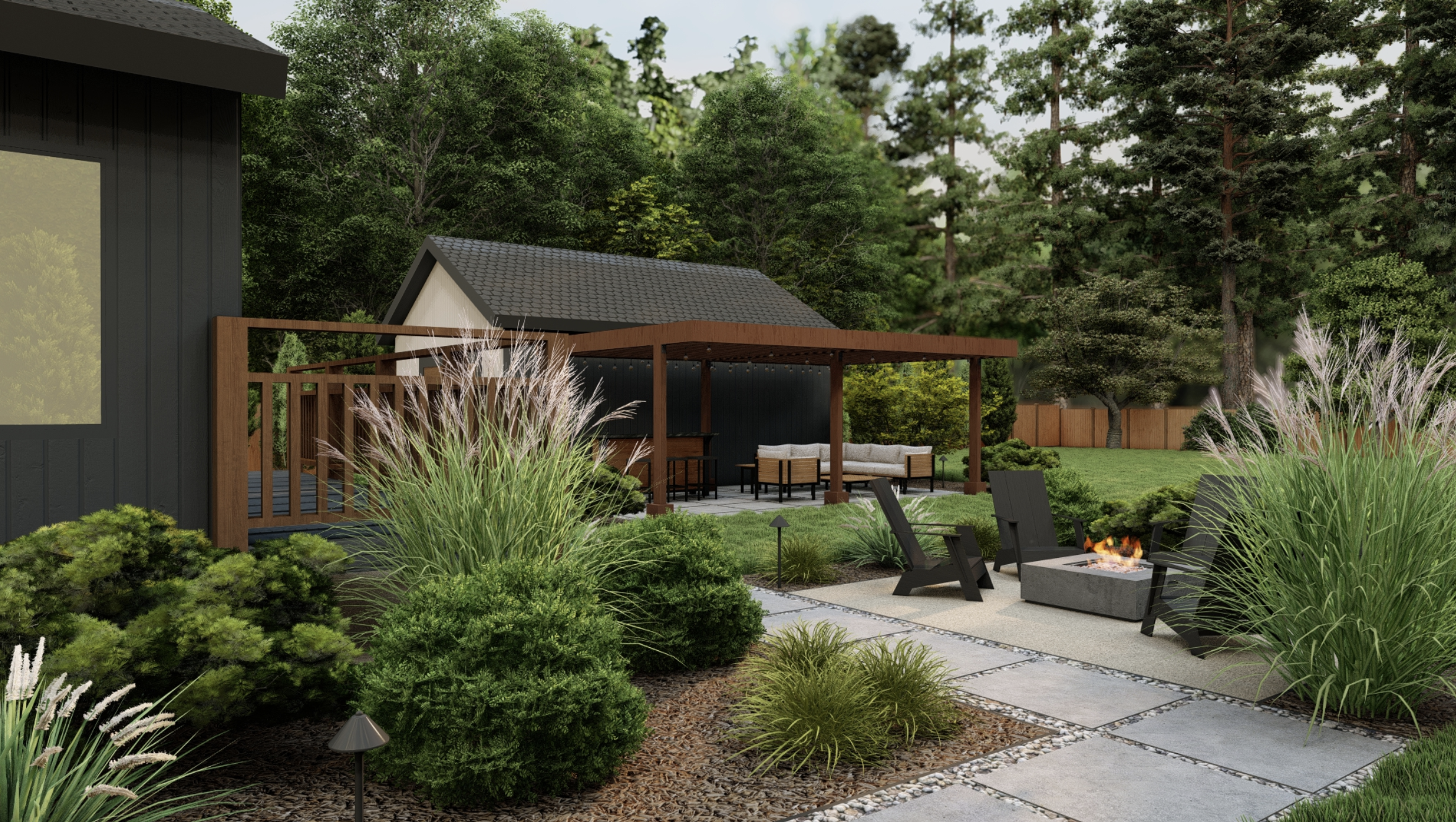
It can be easy to feel defeated by winter in the yard – the chill, the snow, the bare branches – but have heart! There is much we can do to keep our yards beautiful and functional through the chilly season. Yardzen’s Design Director, Kevin Lenhart, shares his top tips for winter landscaping and year-round outdoor living, including design principles he uses in his own all-seasons yard.
The Easiest Landscape Upgrade You Will Ever Make
Sitting outside with my family in the evenings is a ritual—a way to wind down after a busy day of school and work. And, for the most part, we don’t let the weather get in the way. The trick is to stay warm and plan ahead.
Rule #1: dress warmly and keep blankets on hand. Sweaters are the easiest landscape upgrade you will ever make.
We also suggest keeping warm blankets on hand. The right blanket doubles as a colorful accent piece, and can be kept within reach in a weatherproof container.
Invest in a Heat Source
For those willing to invest a bit, a heat source like a fire pit, tower heater, or infrared heater is a must for winter landscaping. While custom fire pits are an investment, prefab gas fire pits can run for as little as a few hundred dollars. Infrared heaters, while spendier than towers, save valuable ground space by mounting to overhead structures like pergola beams – for smaller areas, mounted infrareds allow that crucial extra chair to fit.
Over 65% of Yardzen clients request a fire pit in their design, including front yard fire pits for year-round porch living.
Warmed by Nature
Sunlight is the supreme heater. Let it in!
Deciduous trees planted around gathering zones (especially south- or west-facing areas) allow sunlight through their bare branches, keeping outdoor spaces warm in the winter months. When leaves return in the spring and summer, the same trees block the sun and provide cooling shade. This same strategy can be used to help heat and cool your home, reducing home energy consumption.
What is a deciduous tree? In the simplest terms: they lose their leaves. Common varieties include birches, maples, oaks, cherries, crabapples, magnolias, and dogwoods. And, the good news is that the cool season is the best time to plant them!
Block the Wind
Evergreen windbreaks provide crucial shelter from northerly winter winds. The trick is to create a gapless barrier, be it a single thick hedge, a mix of low and tall plants, or even a row of plant containers with dense evergreens. Whatever their makeup, windbreaks should be positioned to the north of gathering zones to block winds before they reach you. This will keep your home warmer too!
Protect from the Elements
Pergolas, covered patios, and porches can transform a yard into an all-seasons gathering space. There are several pergola options with cantilevered and removable covers that protect from the elements.
Don’t Forget the Floor
When exposed to daytime sunlight, flooring made from dense materials like concrete or pavers will absorb and retain the sun’s warmth. After a long day drinking in sunlight, these materials reradiate their absorbed heat, helping to offset the cold on winter evenings.
A word of warning, the opposite also holds true: these same materials kept shaded all day in cold weather will act like an icebox at night. If this is your situation, we suggest a thick outdoor rug to minimize the cooling effect – think of it as putting a sweater on your concrete. Added bonus: outdoor rugs, like blankets, are great accent pieces!
String lights in a recently completed Yardzen backyard! Photo by The DIY Playbook. Learn more in her blog post all about her Yardzen experience!
Light it Up
Easy to install and attractive, string lights are a no-brainer solution to shorter winter days. When it comes to string lights, one of my top tips is: less is more. Use string lights to outline the edges of a space, or to imply a zone in your yard, but avoid stringing them across key views. Lights along three edges with an unstrung fourth edge will make a cinema of your seating area.
Wherever they may be, we suggest turning off all outdoor lights when not in use. Lights left on all night pose a surprisingly serious threat to local insect populations (and, by extension, to the birds and other creatures who eat them).
Evergreens
Winter landscaping isn’t the first thing most of us think of when we envision beautiful outdoor spaces, but the right choices will keep your yard looking beautiful throughout the entire year.
The easiest trick: plant evergreens. We suggest at least one evergreen species per planting area.
Evergreens are also great in containers. Position containers at the corners of gathering spaces to add coveted winter foliage, or arrange them as a windbreak. There’s no shortage of species to choose from: Sedum, Salvia, Blue Spruce, Verbena, and Boxwood are just a few of the container friendly, winter-hardy evergreens out there.
Time to Shine
Pay attention to bloom timing. Choose plants that bloom early in the spring (Spring-blooming Crocus, Paperwhites) and late in the fall/early in the winter (Hellebores, Camellia sasanqua). Add trees that bloom on bare branches like Cercis or Flowering Cherry (both excellent habitat trees, to boot!).
By sequencing blooms to last as much of the year as possible, you not only create a dynamic and colorful winter design, you provide a steady supply of habitat for critical pollinator species like native bees.
Let it Be
For those – author included – who find beauty in winter-dormant meadows, you can also help your local ecosystems by leaving dead plant material alone. By keeping just the bottom 12” of winter-dormant plants in place (you can trim off the top), you do a great service to many species of bugs, who in turn provide crucial food for migrating birds.
Not into that? We get it. Here’s a workaround: cut down dead plant material in long stalks, bundle it, and place it in a less visible part of your yard for the bugs to enjoy all winter long.
Love Winter for Being Winter
The above steps will help you get your yard and outdoor spaces prepped for winter beauty and activity, but the best tip of all is to embrace winter for what it is. A little chill becomes a lovely memory in the midst of summer heat, and the drama of your winter landscape helps your spring blooms feel all the more lush. Bundle up, and enjoy!
Featured Articles
Eye-Catching Evergreen Landscaping Ideas for Year-Round Beauty
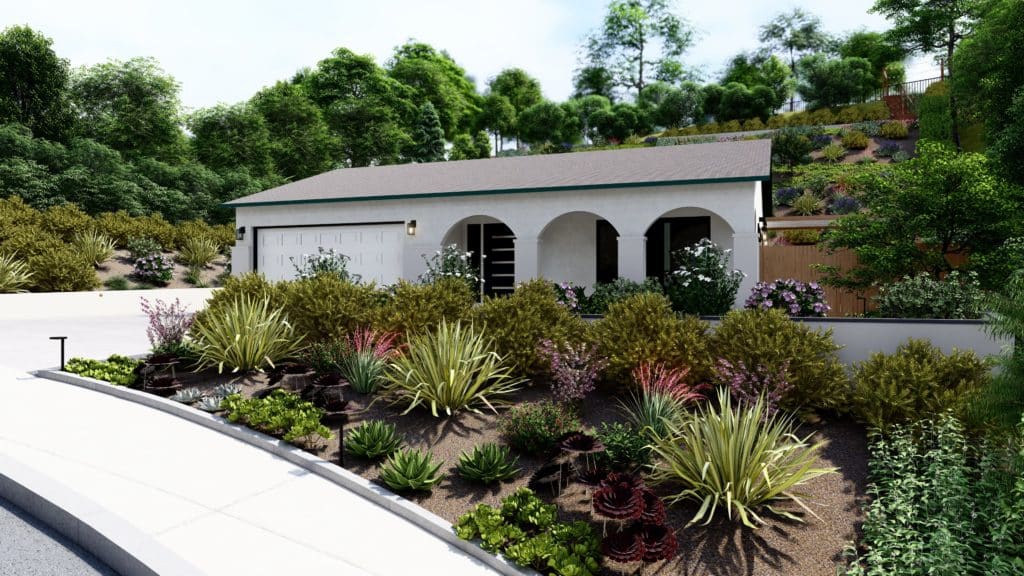
11 Genius Ideas for Designing a Year-Round Yard
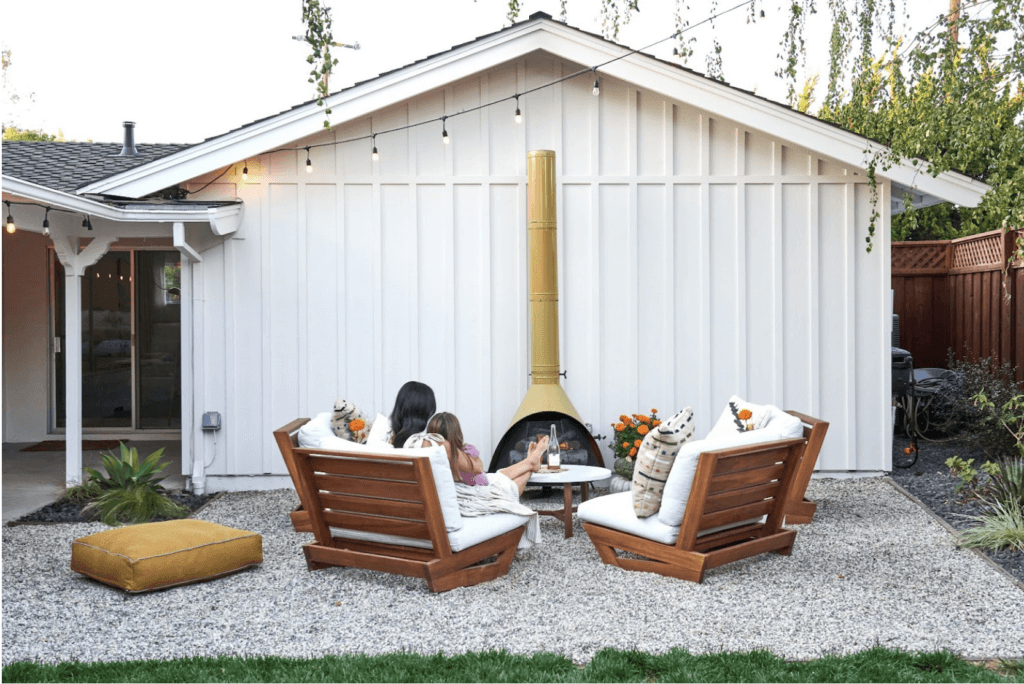
Heated Plunge Pool and Salvaged Fireplace Create a Year-Round Yard for Outdoor L...

New Yard For Summer? Experts Say to Get Started in the Cool Season
